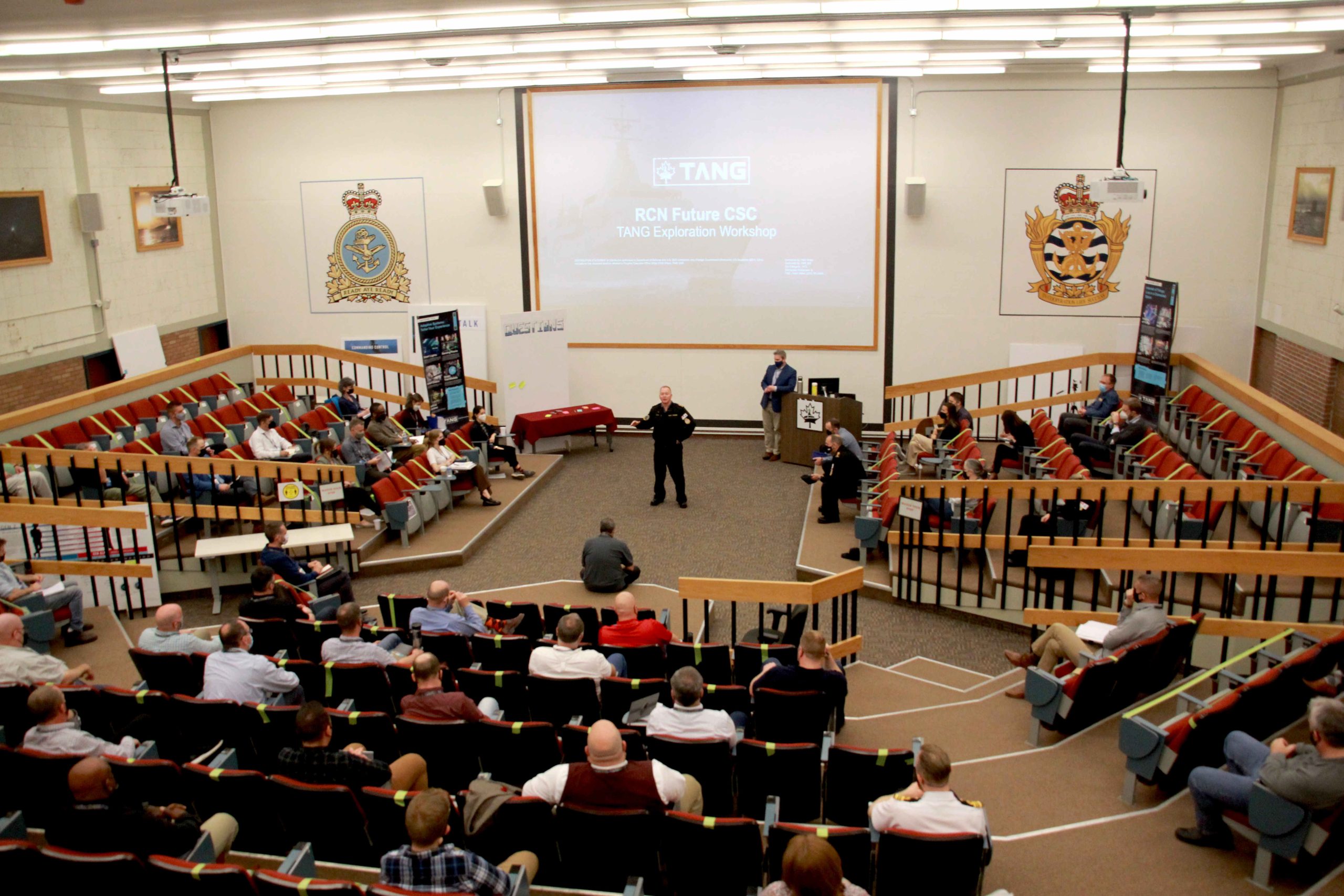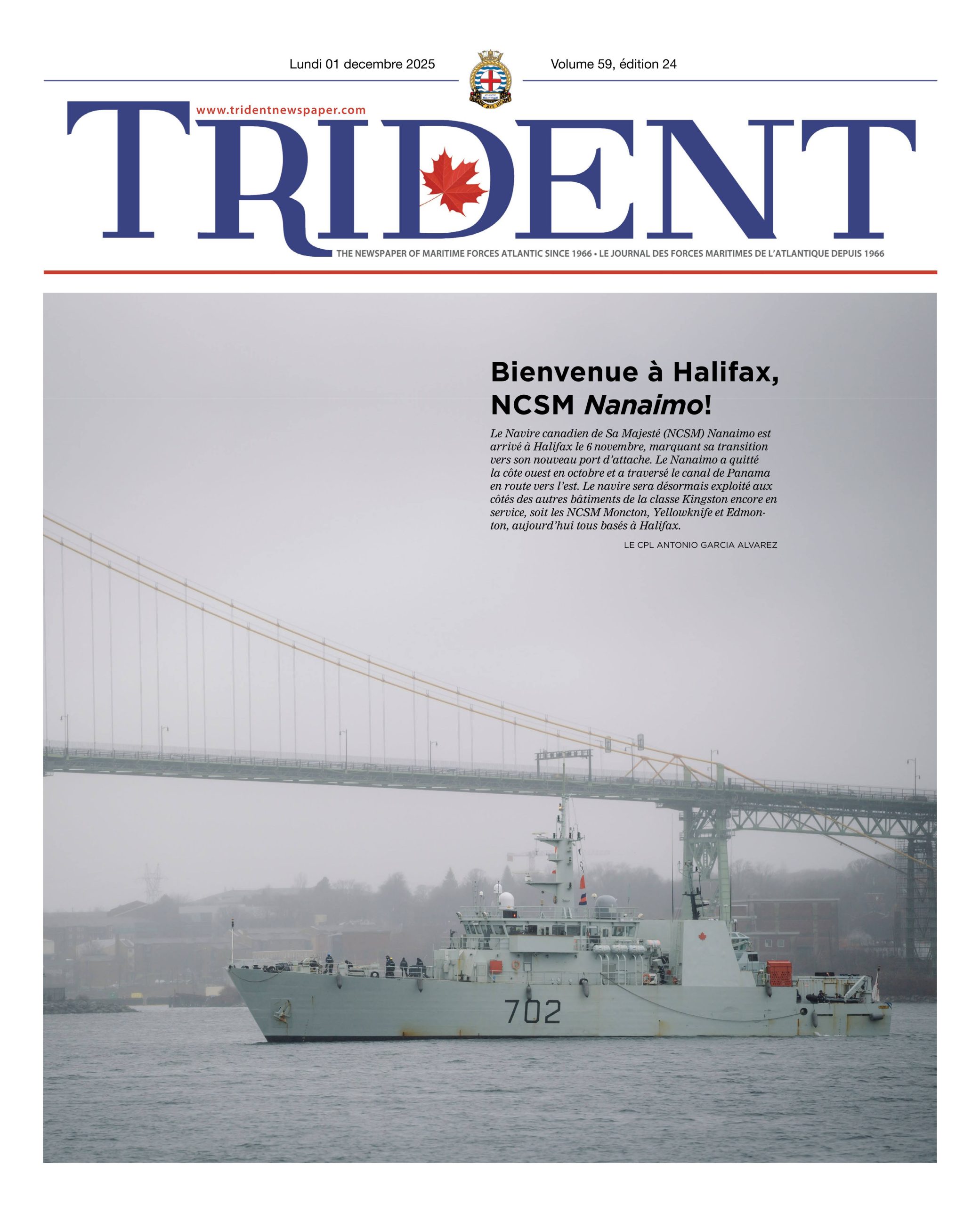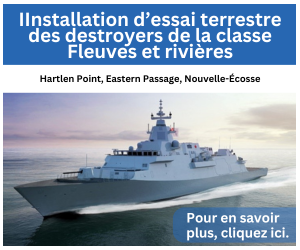
RYAN MELANSON, L'ÉQUIPE DU TRIDENT
Workshop focuses on design for future Canadian Surface Combatants (CSC)
Par Joanie Veitch,
Équipe du trident
How do you design a warship with its future sailors in mind, given that many of those future sailors are just ten years old, or even younger?
That’s the challenge that was put to a group of about 55 personnel — sailors, air force personnel and industry representatives — at a facilitated workshop looking to draw a diverse range of perspectives on the design for the Canadian Surface Combatant (CSC) project.
Organized by the CSC project planning personnel, the workshop ran from May 16 to 19 at the Canadian Forces Maritime Warfare Centre (CFMWC) at CFB Halifax. It was facilitated by a team from Tactical Advancements for the Next Generation (TANG), a program from Johns Hopkins University Applied Physics Laboratory.
The CSC will replace Canada’s Halifax-class frigates, and the retired Iroquois-class destroyers; plans are for a new fleet of 15 warships. With an estimated project budget of approximately $60 billion, it is set to be the largest investment in the Royal Canadian Navy (RCN) since the Second World War.
The first of the 15 ships is expected to begin construction in 2023, with anticipated delivery in the early 2030s. Delivery of the remaining ships will continue into the 2040s.
In his opening remarks, RAdm Brian Santarpia, Commander Maritime Forces Atlantic and Joint Task Force Atlantic, noted that while many aspects of maritime operations remain constant, the ships will be sailing into an ever-changing geopolitical environment, with new threats and rapidly evolving technological advancements.
In bringing together such a diverse group of participants, RAdm Santarpia said the workshop offered an opportunity to “leverage outside views and expertise” in a way not previously done before.
Before breaking into smaller groups, the TANG team gave a brief overview of research carried out last fall, when some members of their team spent time aboard HMCS Toronto and interviewed more than 70 personnel — learning more about how a warship’s design details can affect the crew, both in their use of the physical space and its impact on communication flow and operations.
For the next two days, participants discussed a variety of different “future” scenarios in their small groups, working under the guidance of workshop facilitators who encouraged them to think about “all the ways design can support the crew and mission performance.”
At the end of the three-day event, Jeff Hutt, one of the project planners at the CSC Project Management Office, said the TANG team did a great job of encouraging innovative ideas from participants, in particular on the theme of information sharing capabilities and how technology can eventually improve that process in the new ships.
“The work now is to break these down into actionable items in terms of design,” Hutt said.






